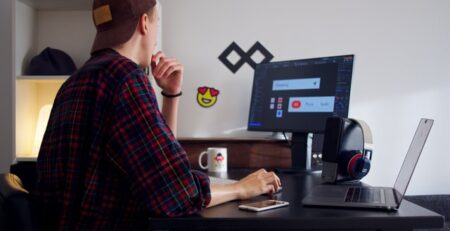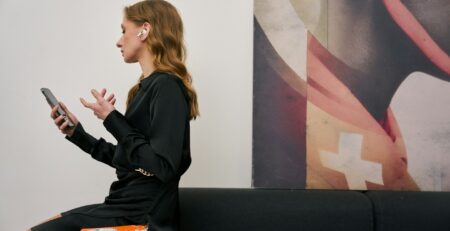Find Your Fashion Force: Recruiting Fashion Designers
The fashion industry, known for its dynamism and ever-evolving trends, demands not only creativity but also a keen eye for future trends. Finding and recruiting the right fashion designers is crucial for any fashion brand looking to make a significant impact in the market. This comprehensive guide explores the nuances of recruiting skilled fashion designers who can contribute to a brand’s success and innovation.
Recruiting fashion designers is not just about assessing technical skills and creativity; it involves understanding a candidate’s ability to blend innovation with marketable designs. The process requires a strategic approach, from sourcing candidates to making the final hiring decision. It’s about finding a designer who not only possesses a strong portfolio but also aligns with the brand’s vision and culture.
The challenge often lies in the competitive nature of the fashion industry, which is saturated with talent and creativity. To stand out, brands must not only offer attractive incentives but also foster an environment that promotes creative freedom and professional growth. This involves understanding the aspirations of designers and providing them with the resources to bring their visionary ideas to life.
Moreover, the advent of digital technology has transformed the traditional recruitment process. Social media platforms and online portfolios have become integral in the scouting process, allowing brands to reach a wider pool of talent. Utilizing these platforms effectively can streamline the recruitment process and help identify designers who might not be accessible through traditional channels.
Another aspect of recruiting fashion designers is the importance of diversity and inclusion. A diverse design team can bring a wide range of perspectives and ideas, which is essential in an industry that serves a global market. Emphasizing diversity in recruitment can enhance creativity and lead to designs that appeal to a broader audience.
Internships and collaborations with fashion schools can also be a strategic move for brands looking to attract fresh talent. These partnerships can serve as a pipeline for young designers who bring fresh ideas and are already somewhat trained in the latest fashion techniques and trends.
Once candidates are identified, the interview process becomes a critical step. It’s not just about what they can offer now, but also their potential for growth and innovation. Questions should not only address their technical skills and experience but also their vision for future trends and their ability to work as part of a team.
Compensation is another critical factor in recruiting top talent. Brands need to ensure that their offers are competitive and commensurate with the skills and potential value the designers bring. This might include salaries, benefits, and other incentives that can attract the best candidates.
Finally, retaining talent is as crucial as recruiting. Developing a nurturing environment that encourages continuous learning and creativity is essential for keeping talented designers motivated and committed to the brand. Regular performance reviews, constructive feedback, and opportunities for professional development play a significant role in retention.
In conclusion, recruiting the right fashion designers involves a blend of strategic sourcing, thorough assessment, and fostering an environment that promotes diversity, creativity, and growth. By focusing on these elements, fashion brands can build a robust team of designers who can propel the brand to new heights of success and innovation.
Key Qualities to Look for in a Fashion Designer
When recruiting fashion designers, several key qualities are essential to identify to ensure that the candidate is a good fit for the brand and its vision. Creativity and a strong sense of aesthetics are fundamental, but beyond these, there are other critical attributes to consider:
- Technical Skills: Proficiency in fashion design software like Adobe Illustrator and knowledge of fabric types, sewing techniques, and pattern making are crucial.
- Trend Awareness: A designer must be up-to-date with current trends and be able to predict future ones.
- Commercial Awareness: Understanding the business side of fashion is important for creating designs that are not only innovative but also marketable and profitable.
- Communication Skills: Effective communication is key to articulating design ideas and collaborating with other team members, including marketers and manufacturers.
- Adaptability: The fashion industry is fast-paced and constantly evolving, so being able to adapt to new trends, consumer demands, and technological changes is essential.
- Attention to Detail: High-quality design requires a keen eye for detail to ensure that the final product meets the brand’s standards.
- Portfolio: A strong portfolio that showcases a range of skills and project types can provide insights into the designer’s style and versatility.
- Passion for Fashion: A genuine passion for fashion design and creativity can be a significant motivator and drive innovation.
- Team Player: Being able to work effectively in a team is important, as the design process often involves collaboration with various departments.
- Problem-Solving Skills: The ability to address and overcome design challenges creatively and efficiently is a valuable quality in a fashion designer.
Assessing these qualities during the recruitment process can help identify candidates who are not only talented but also a good fit for the company’s culture and goals. Tools such as structured interviews, practical assessments, and thorough portfolio reviews can aid in evaluating these attributes effectively.
Utilizing Social Media for Recruiting Fashion Designers
Social media platforms like Instagram, LinkedIn, and Pinterest have become powerful tools for recruiting fashion designers. These platforms allow brands to reach a broad audience, showcase their culture, and attract talent who aligns with their aesthetic and values. Here’s how to effectively use social media for recruitment:
- Brand Presence: Maintain an active and appealing social media presence that reflects the brand’s identity and values. This helps attract designers who resonate with the brand.
- Engagement: Engage with users by commenting on posts, sharing relevant content, and participating in fashion-related discussions. This increases visibility and attracts potential candidates.
- Hashtags: Use targeted hashtags to reach designers looking for job opportunities or those who are showcasing their work.
- Portfolio Showcases: Encourage designers to share their work on your platform or tag your brand, providing them with exposure and you with easy access to their portfolios.
- Job Postings: Post job openings on social media with clear descriptions and appealing visuals that highlight the benefits of working for your brand.
- Influencer Collaborations: Collaborate with fashion influencers who can help amplify your recruitment efforts and attract talent from their followers.
- Success Stories: Share success stories of current employees, especially designers, to illustrate the potential career growth and satisfaction within your brand.
- Direct Messaging: Use direct messaging for initial contacts or to answer questions from potential candidates, making the approach more personal.
- Analytics: Utilize analytics tools to track the success of your recruitment campaigns and adjust strategies accordingly.
- Virtual Events: Host virtual career fairs or live Q&A sessions where potential candidates can learn more about the company and its culture.
By leveraging the power of social media, fashion brands can not only enhance their visibility but also streamline the recruitment process, making it more dynamic and accessible.
The Role of Diversity in Recruiting Fashion Designers
Diversity in the fashion industry is crucial, not only for ethical reasons but also for fostering creativity and innovation. Recruiting a diverse range of fashion designers can lead to more innovative designs and help the brand appeal to a broader audience. Here are some strategies to effectively implement diversity in recruitment:
- Inclusive Job Advertisements: Use language that is inclusive and welcoming to all demographics in job postings.
- Varied Recruitment Channels: Utilize a variety of recruitment channels to reach a diverse audience. This can include minority-focused fashion schools, forums, and job fairs.
- Bias-Free Selection Process: Implement procedures to minimize biases in the selection process, such as blind reviews of portfolios.
- Diversity Training: Provide diversity training for recruiters and hiring managers to ensure they understand the importance and benefits of a diverse workforce.
- Support Networks: Establish support networks and mentorship programs for underrepresented groups within the company to aid retention and integration.
- Feedback Mechanisms: Create mechanisms for feedback on the recruitment process from candidates to identify areas for improvement in promoting diversity.
- Partnerships: Form partnerships with organizations that promote diversity in the fashion industry.
- Transparency: Be transparent about the company’s diversity goals and progress towards them to build trust and accountability.
- Celebrate Diversity: Actively celebrate cultural diversity within the company through events, discussions, and inclusive policies.
- Continuous Assessment: Continuously assess and refine recruitment strategies to improve diversity outcomes.
Implementing these strategies can help fashion brands not only enhance their creativity and market reach but also contribute to a more inclusive and equitable fashion industry.

Structuring the Interview Process for Fashion Designers
The interview process for fashion designers is a critical step in the recruitment process. It provides an opportunity to delve deeper into the candidate’s skills, creativity, and fit with the company culture. Structuring the interview process effectively can help in making informed hiring decisions. Here are some steps to consider:
- Pre-Screening: Conduct a pre-screening process through phone or video calls to assess basic qualifications and communication skills.
- Portfolio Review: Arrange a detailed review of the candidate’s portfolio to discuss their past work, the design process they followed, and the outcomes.
- Practical Test: Consider including a practical test that challenges the candidate to create a design or solve a problem related to your brand’s needs.
- Behavioral Interviews: Use behavioral interview techniques to understand how the candidate has handled situations in the past and their approach to teamwork and challenges.
- Cultural Fit: Assess cultural fit by discussing the company’s values and expectations and gauging the candidate’s alignment with them.
- Team Interaction: Allow the candidate to interact with potential team members to assess compatibility and team dynamics.
- Feedback Collection: Gather feedback from all stakeholders involved in the interview process before making a decision.
- Multiple Rounds: If necessary, conduct multiple rounds of interviews to thoroughly assess the candidate’s abilities and fit.
- Offer Discussion: Clearly discuss the role, expectations, compensation, and growth opportunities with the candidate.
- Post-Interview Feedback: Provide timely feedback to candidates post-interview, regardless of the outcome.
By carefully structuring the interview process, fashion brands can ensure that they select the most suitable candidates who not only have the right skills but also fit well with the team and the overall company culture.
Strategies for Retaining Fashion Designers
Retaining talented fashion designers is crucial for maintaining continuity and fostering a creative environment within a fashion brand. Here are effective strategies to enhance retention:
- Competitive Compensation: Offer competitive salaries and benefits to ensure designers feel valued and financially satisfied.
- Career Development: Provide opportunities for career advancement and professional development to keep designers engaged and motivated.
- Creative Freedom: Allow designers creative freedom in their projects to foster innovation and job satisfaction.
- Work Environment: Create a positive and supportive work environment that encourages collaboration and open communication.
- Recognition: Regularly recognize and reward designers for their hard work and achievements to boost morale and loyalty.
- Feedback Mechanisms: Implement regular feedback mechanisms that allow designers to voice their concerns and suggestions.
- Work-Life Balance: Promote a healthy work-life balance with flexible working conditions to reduce burnout and increase job satisfaction.
- Team Building: Engage in team-building activities that foster a sense of community and belonging among designers.
- Innovation Opportunities: Provide opportunities for designers to work on innovative projects or learn new skills that align with industry advancements.
- Exit Interviews: Conduct exit interviews to understand why designers leave and use this information to improve retention strategies.
By implementing these strategies, fashion brands can create an attractive and fulfilling work environment that not only attracts but also retains top talent in the fashion industry.
Impact of Compensation and Benefits on Recruiting Fashion Designers
Compensation and benefits are critical factors in the recruitment of fashion designers. They not only affect the ability to attract top talent but also play a significant role in retention. Here’s how compensation and benefits impact the recruitment process:
- Attractiveness: Competitive salary packages make positions more attractive to high-quality candidates.
- Perception of Value: Benefits such as health insurance, retirement plans, and paid leave contribute to a perception of the company as a caring and valuable place to work.
- Job Satisfaction: Fair and transparent compensation practices increase job satisfaction and loyalty among designers.
- Market Standards: Offering compensation that meets or exceeds market standards can set a brand apart from competitors in the job market.
- Retention: Comprehensive benefits packages can be a key factor in retaining top talent and reducing turnover.
- Work-Life Balance: Benefits that promote work-life balance, such as flexible working hours and telecommuting options, can attract candidates looking for a more adaptable work environment.
- Employee Wellness: Programs that support employee wellness, such as gym memberships or wellness stipends, can enhance overall job satisfaction and productivity.
- Incentives: Performance-based bonuses and profit-sharing plans can motivate designers to perform at their best and feel more connected to the company’s success.
- Professional Development: Investing in the professional development of designers, such as funding for workshops or courses, can attract candidates who are eager to advance their skills.
- Equity and Fairness: Ensuring that compensation and benefits are equitable across all levels and roles within the company promotes a fair and inclusive culture.
By carefully considering the structure of compensation and benefits, fashion brands can effectively attract and retain skilled designers who are crucial to the brand’s creative and commercial success.
Benefits of Partnering with Fashion Schools in Recruitment
Partnering with fashion schools can be a strategic approach for fashion brands and creative agencies looking to recruit fresh talent. This collaboration offers numerous benefits, from accessing a pool of skilled graduates to enhancing the brand’s reputation within the academic community. Here are the key benefits:
- Access to Talent: Fashion schools are breeding grounds for fresh talent, and partnerships can provide direct access to graduating students. Creative agencies and companies like icreatives staffing can benefit greatly from this direct access.
- Curriculum Input: Brands can provide input on the curriculum, ensuring that students are learning skills that are directly applicable to the industry.
- Internship Opportunities: Offering internships to students can help them gain real-world experience while allowing the brand and creative agencies to evaluate potential future employees.
- Brand Visibility: Engaging with fashion schools increases brand visibility and reputation among students and faculty, which can attract top talent.
- Innovation: Young designers often bring new perspectives and innovative ideas that can be beneficial for the brand.
- Cost-Effective Recruitment: Recruiting directly from schools can be more cost-effective than engaging in broader, more competitive recruitment campaigns.
- Feedback Loop: Continuous feedback from interns and graduates can help brands improve their offerings and workplace culture.
- Community Engagement: Partnerships with schools can demonstrate a brand’s commitment to community engagement and education.
- Long-Term Relationships: Building long-term relationships with fashion schools can ensure a steady pipeline of talent.
- Exclusive Access: Some partnerships may provide exclusive access to student portfolios and graduate shows, giving brands a first look at emerging talent.
By fostering partnerships with fashion schools, brands can not only enhance their recruitment strategy but also contribute to the development of the future workforce of the fashion industry.
Conclusion
Recruiting the right fashion designers is pivotal for any fashion brand aiming to make a significant impact in the highly competitive market. From leveraging social media to partnering with fashion schools, brands must employ a multifaceted approach to attract and retain top talent. The emphasis on diversity, competitive compensation, and a supportive work environment further enriches the recruitment process, ensuring that brands not only attract but also nurture the creative minds that will drive their future success.
The strategies discussed provide a roadmap for fashion brands to navigate the complexities of recruitment in the fashion industry. By focusing on these key areas, brands can build a strong, dynamic team of designers who can contribute to both the creative and commercial success of the business.
Moreover, the integration of technology and digital platforms in the recruitment process cannot be overlooked. These tools offer an unprecedented opportunity to reach a global pool of talent, streamline the recruitment process, and enhance the overall efficiency of hiring practices.
It is also crucial for brands to stay updated with the latest trends not only in fashion but also in recruitment and human resources. Adapting to new methods and technologies, understanding the changing dynamics of the job market, and maintaining a flexible approach to recruitment will help brands stay competitive and appealing to potential candidates.
Ultimately, the goal is to create a symbiotic relationship where both the designers and the brand grow and evolve together. This requires a continuous effort in nurturing talent, embracing innovation, and fostering an environment where creativity thrives.
As the fashion industry continues to evolve, so too must the strategies for recruiting the creative forces behind it. By embracing these comprehensive approaches, fashion brands and creative agencies can ensure they remain at the forefront of design and innovation, attracting not just designers, but visionaries who can redefine what fashion means in the modern era.
In conclusion, the journey to finding and nurturing the right fashion talent is intricate and challenging but immensely rewarding. The success of a fashion brand lies not just in its products but in its people, making effective recruitment strategies key to sustaining and enhancing the brand’s legacy in the ever-evolving fashion landscape.
In today’s competitive market, finding the right creative and marketing expert can be a challenge. But with icreatives, you’re in experienced hands. With 37 years in staffing and a track record of matching more than 10,000 employees to over 1,000 companies worldwide, we know how to connect you with the best. Plus, you only pay if you hire—there’s no risk, only results.
Ready to find your perfect creative or marketing expert? HIRE WITH ICREATIVES today!












